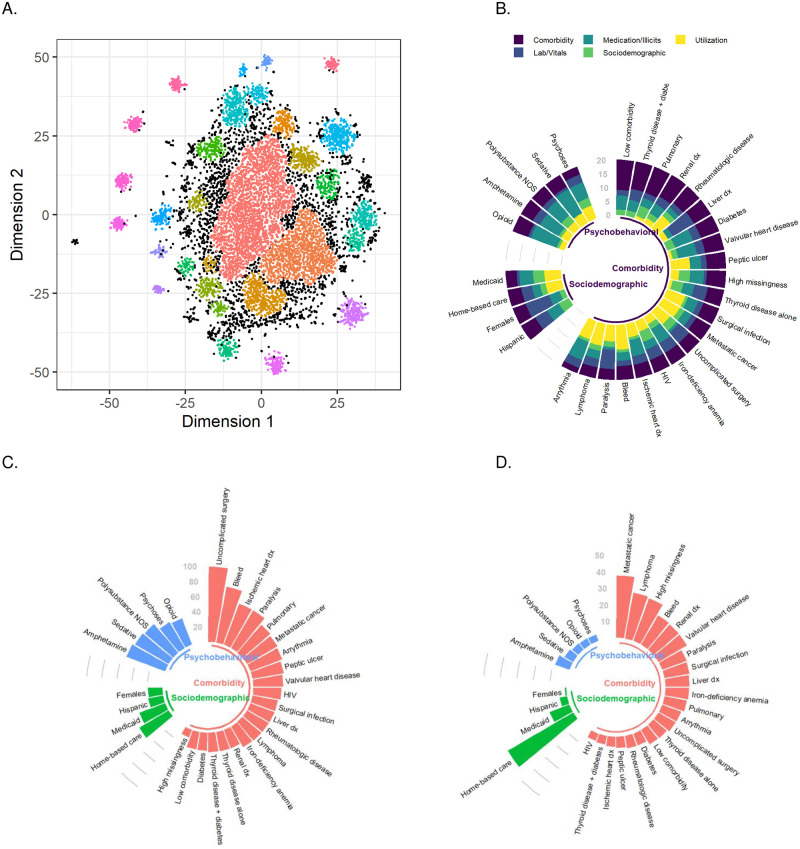
What is the problem
Health care is not one-size-fits-all. Identifying distinct subgroups of patients and physicians can facilitate targeted delivery of interventions for high-risk patients. How can machine learning algorithms phenotype patients and clinicians to facilitate better interventions?
What are we doing
In one project, we used functional methods that make use of longitdinal unstructured data to identify novel trajectories of mortality risk that could inform future prognostic algorithms. In another project, we used latent profile analysis to identify phenotypes of oncologists that respond to a machine learning algorithm. We have also used machine learning clustering tools, including density-based clustering, to identify over 30 phenotypes of high-risk Veterans.
Impact
These statistical and machine learning clustering tools are being used to identify distinct subgroups of individuals to refine interventions. For example, we are now testing alternative approaches to address clusters of physicians who did not respond to a "nudge" for advance care planning in a randomized trial.

